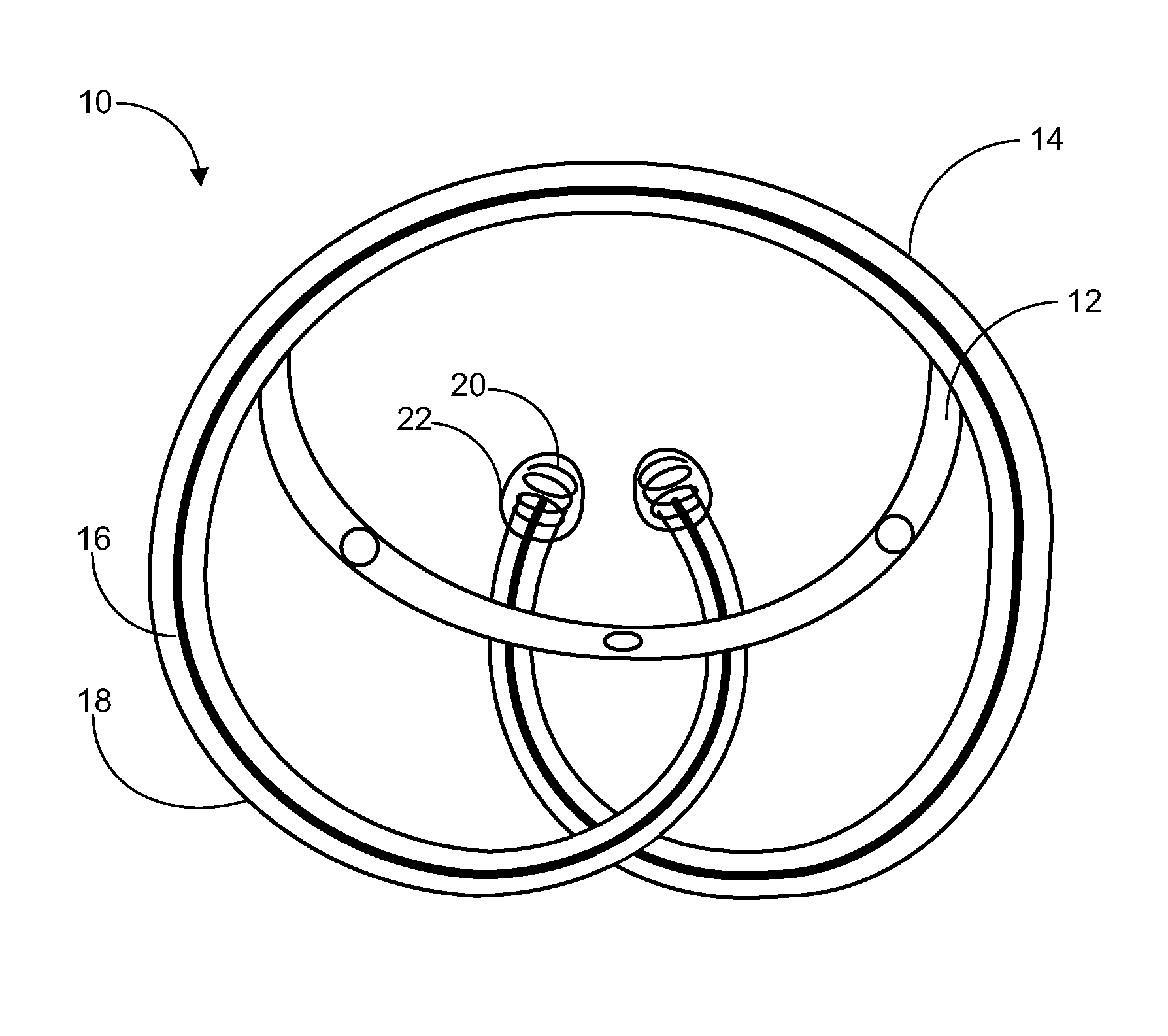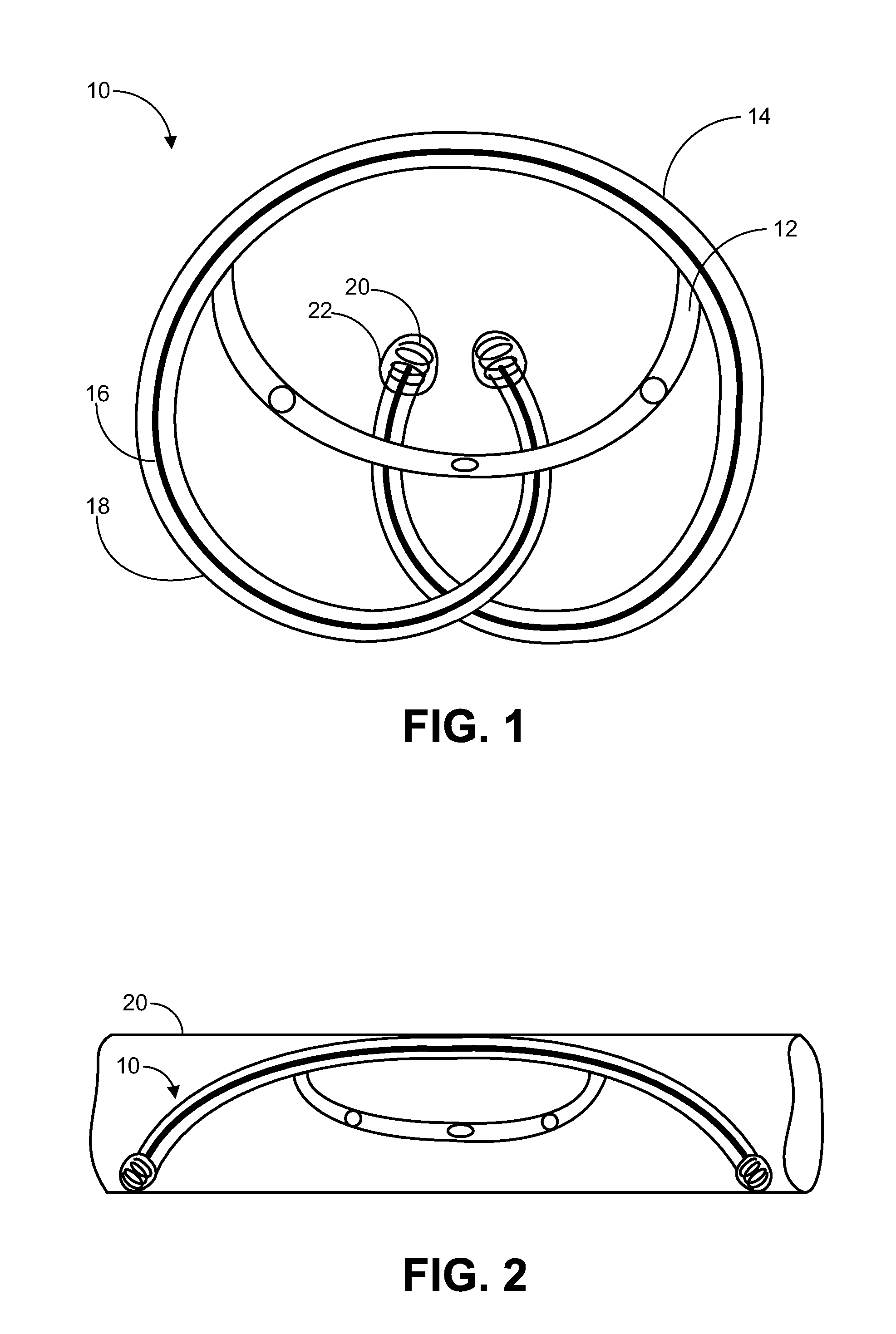Implantable drug delivery device and methods for treatment of the bladder and other body vesicles or lumens
a technology of vesicles or lumens and drug delivery devices, which is applied in the direction of drugs, prostheses, catheters, etc., can solve the problems of pain in the instillation procedure, the quantity of drug to reach the desired site is reduced, and the conventional method and device for delivering the drug has significant shortcomings
- Summary
- Abstract
- Description
- Claims
- Application Information
AI Technical Summary
Benefits of technology
Problems solved by technology
Method used
Image
Examples
example 1
Design of a Tubular Osmotic Pump
[0171]Described below is the design of a tubular osmotic pump made of silicone. Other biocompatible polymer tubes such as polyurethane can be used depending on the permeability to water (and drug) and mechanical properties. Design equations for the tubular osmotic pump permit obtaining the desired drug payload and release rate. Tube thickness is related to mechanical integrity and water permeability. Tube inner diameter and tube wall thickness determine the drug payload and outer diameter of the tube. Tube length affects both drug payload as well as the macro size or loop diameter of the tubular osmotic pump. Osmotic surface area over which water or urine can permeate through the tube is affected by tube outer diameter and tube length. These parameters influence the overall performance of the osmotic pump.
[0172]The tubular osmotic pump holds a drug on an interior reservoir, and is capable of transfer the drug to an outside medium Parameters of the tub...
example 2
Comparison of Release Profiles for Differing Devices
[0209]Examples of the application of Eq. (1.12) are presented here. FIG. 17 illustrates three different devices A, B, and C, and FIG. 18 is a graph illustrating in vitro drug release profiles for the three different devices A, B, and C. Each device was a tube that functioned as an osmotic pump. The tubes were formed from silicone. Each tube defined an interior reservoir, and a volume of lidocaine was loaded into the reservoir. Each tube also defined an exterior osmotic surface area, and an orifice was formed in the osmotic surface area. The orifice permitted releasing the lidocaine from the reservoir under osmotic pressure.
[0210]More specifically, Device A was a silicone tube having an osmotic surface area of about 2 cm and a reservoir volume of about 2 mg. Device B was a silicone tube having an osmotic surface area of about 1 cm and a reservoir volume of about 1 mg. Device C was a silicone tube having an osmotic surface area of ab...
example 3
Selection of Device Characteristics to Achieve a Desired Release Rate
[0213]Listed below are equations that permit selecting device characteristics to achieve a desired release rate. More specifically, the equations may permit determining how much of a device should be covered with a coating or sheath to achieve a certain release rate for a certain payload. The device characteristics may be determined with reference to a control device of control dimensions that releases a control drug payload according to a control release profile during in vitro testing. Once theses control parameters are known, the equations may determine the characteristics of a target device that exhibits a target release rate in comparison to the control device.
[0214]For purposes of example, Device A of FIG. 17 was the control device. Device A had a the following design parameters:
[0215]Tube inner diameter: do=0.3048 mm
[0216]Tube wall thickness: ho=0.1651 mm
[0217]Tube length: Lo=2 cm
[0218]Payload: mp,o=2 mg
[021...
PUM
| Property | Measurement | Unit |
|---|---|---|
| size | aaaaa | aaaaa |
| outer diameter | aaaaa | aaaaa |
| diameter | aaaaa | aaaaa |
Abstract
Description
Claims
Application Information
 Login to View More
Login to View More - R&D
- Intellectual Property
- Life Sciences
- Materials
- Tech Scout
- Unparalleled Data Quality
- Higher Quality Content
- 60% Fewer Hallucinations
Browse by: Latest US Patents, China's latest patents, Technical Efficacy Thesaurus, Application Domain, Technology Topic, Popular Technical Reports.
© 2025 PatSnap. All rights reserved.Legal|Privacy policy|Modern Slavery Act Transparency Statement|Sitemap|About US| Contact US: help@patsnap.com



